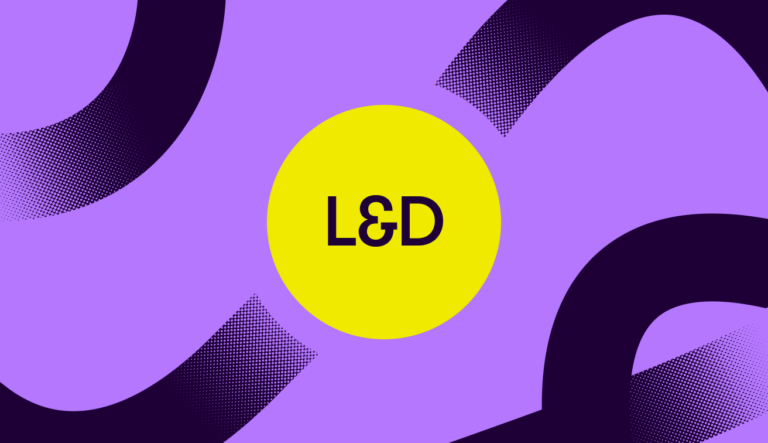Career development theories
This guide defines what career development is and the different theories that can help individuals on their career journey. Learn how to apply these theories to your own life and future career.

When it comes to career planning, understanding why we make certain choices and how we adapt to changes can make a huge difference.
Career development theories provide valuable frameworks to help us navigate the complex journey of finding the right career, growing in our roles, and adjusting to new opportunities.
In this guide, we’ll explore 12 essential theories that offer practical insights and strategies to support your career growth. Whether you’re just starting out or looking to make a change, these theories can help you build a more fulfilling professional path.
Contents:
- What is career development?
- How to approach career development
- Career development theories
- Frank Parsons trait and factor theory
- Holland theory of vocational types
- Bandura’s social cognitive theory
- Super’s developmental self-concept theory
- Krumboltz social learning
- Ann Roe ‘needs’ theory
- Roe’s personality theory
- Linda Gottfredson – circumscription and compromise
- Tiedeman and Miller – Tiedeman’s decision-making model
- Additional theories to consider
- Career development plan
What is career development?
How to approach career development
Approach this process with a growth mindset. Be open to feedback, actively seek learning opportunities, and don’t be afraid to explore new challenges.
It’s all about evolving your skills, learning from your experiences, and planning ahead.

Career development plan template
This template helps employees and leaders plan together for career growth: set goals, assess skills, and make a plan.
Download nowCareer development theories
Career development theories offer frameworks to understand how individuals choose careers and navigate their professional lives.
Let’s walk through some of these theories to see how they connect with real life.
Frank Parsons’ Trait and Factor Theory
This theory was created by Frank Parsons in the early 1900s, although his theory wasn’t published until after he died in 1909.
Frank Parsons is often called the “father of vocational guidance.”
His theory boils down to a simple concept: match people’s traits (like their interests, skills, and values) with job requirements. He created a three-step process:
- Know yourself—understand your strengths, passions, and skills.
- Know the job market—research different job options and what they require.
- Find the fit—align your traits with the most compatible career.
Why it matters: This theory is still widely used today in career counseling and tools like aptitude tests, helping people align their abilities with available careers.
Further Reading: Frank Parsons’ Choosing a Vocation – Public Domain, 1909. Richard Sharf.
Holland Theory of Vocational Types (RIASEC)
John Holland took Parsons’ idea and expanded it, dividing personalities into six types (RIASEC):
- Realistic
- Investigative
- Artistic
- Social
- Enterprising
- Conventional
While there are many facets involved in each personality type, the theory relies on an individual’s personality type to direct their proper career path.
This theory assumes that all people do have some features of each personality type, although identifying the dominant personality trait is key in determining the right career path for them.
For example, someone with a primarily investigative personality would be well suited to work as a biologist or anthropologist. On the other hand, someone with a dominant enterprising personality would work well in sales or promoting businesses and services for others.
Why it matters: Holland’s theory is a core part of career assessments like the Strong Interest Inventory, guiding people toward fulfilling career paths.
Further reading: John Holland’s Making Vocational Choices – APA Publications. Reardon, Robert C., Career Theory and Practice: Learning Through Case Studies.
Bandura’s Social Cognitive Theory
Albert Bandura created this career development theory, which also relies on the personal aspects of an individual to build their career path.
However, unlike other theories, it places greater weight on a person’s past experiences.
Behind these experiences, one can find what motivates an individual. When you find the reason behind what motivates a person (praise, controlling outside factors, competitiveness with peers), you can determine the career where they are most likely find success.
According to Bandura, if you believe in your skills and have positive experiences, you’re more likely to aim for and achieve challenging career goals.
Why it matters: This theory emphasizes the importance of confidence-building and learning from experiences, which is essential for career growth.
Further reading: Albert Bandura’s Self-Efficacy: The Exercise of Control. Robert Lent & Steven Brown, Social Cognitive Career Theory in a Diverse World.
Super’s Developmental Self-Concept Theory
Donald Super began developing career theories in the 1950s and continued to do so throughout his professional life. As his ideas expanded, they also grew in complexity.
Super’s theory recognizes that as we go through different stages in life (like adolescence, early adulthood, mid-life), our goals and perceptions change.
He categorized these stages into Growth, Exploration, Establishment, Maintenance, and Decline. It’s like seeing your career journey as an evolving narrative, adapting to life changes and maturity.
Super even conducted a study that followed individuals for a long span in their lives, from 9th grade up to their 30s, to confirm his beliefs. He found that with maturity and experience, individuals change their concept of self and often their goals.
For example, in early adulthood, individuals often focus on relationships with others. By middle adulthood, many individuals move on to developing their skills and careers.
Why it matters: Understanding these stages helps you create realistic career goals and pivot as your priorities shift.
Further reading: Donald Super, The Psychology of Careers. Vernon Zunker, Career Counseling: A Holistic Approach.
Krumboltz’s Social Learning Theory (Happenstance)
John Krumboltz borrowed from Bandura and introduced the idea of happenstance—basically, the role of chance events in shaping our career paths.
His theory suggests that our experiences, both planned and unplanned, help build the skills we need and guide our career choices.
It’s like being open to the idea that sometimes, the best opportunities come unexpectedly.
Why it matters: This theory is great for those feeling unsure about their next move—it encourages flexibility and embracing new opportunities.
Further reading: John Krumboltz, Luck Is No Accident. Duane Brown, Career Information, Career Counseling, and Career Development.
Ann Roe’s Needs Theory
The ‘needs’ approach, developed by Ann Roe, assesses the structure of needs and values each individual has based on experiences early in life and childhood.
However, the theory also accounts for environmental and genetic factors, all of which she believed should be considered to find a career that fits an individual’s ‘needs.’
The theory includes six levels of skills ranging from unskilled to professional/managerial (considered the top-level).
From there, Roe also includes eight different significant occupation categories to build from; including science, technology, arts and entertainment, outdoor, service, business, managerial, and general cultural occupations.
Why it matters: This theory is helpful in exploring how past experiences influence what we value in a career.
Further reading: Ann Roe, The Psychology of Occupations. Duane Brown, Career Choice and Development.
Roe’s Personality Theory
Much like Ann Roe’s ‘needs’ approach to career development, the personality theory also places a lot of importance on an individual’s early life experiences.
In this case, the experiences Roe focuses on most are the interactions an individual has with their parents during childhood.
In short, the more interaction a person has with their parents, the more likely they are to choose jobs she classifies as ‘person oriented’ or ‘non-person oriented.’ In her needs approach, she also classifies occupations into eight different categories, five of which are person-oriented and three of which are non-person oriented.
Based on an individual’s experience, they will have different levels of independent capability. She also considered non-person oriented jobs to be the more independent of the eight categories.
Why it matters: It offers insight into why some people are drawn to helping professions, while others lean towards more technical or solitary careers.
Linda Gottfredson – Circumscription and Compromise
Linda Gottfredson’s theory digs into how children eliminate career choices based on social factors like gender roles and social class, which she called circumscription.
As they grow older, they adjust or compromise their choices based on perceived attainability. Essentially, kids first pick careers based on what feels socially right, then adjust based on what’s realistic.
Why it matters: This theory is key to understanding early career aspirations and shaping realistic career goals later.
Further reading: Linda Gottfredson, Circumscription and Compromise: A Developmental Theory of Occupational Aspirations.
Tiedeman and Miller’s Decision-Making Model
Tiedeman’s model, inspired by Erikson’s psychosocial stages, emphasizes decision-making as a crucial part of career development.
It’s divided into two phases: Anticipation (exploring, choosing, clarifying) and Implementation (acting, reforming, integrating).
This model highlights that finding a career isn’t just about choices—it’s also about adjusting to those choices over time.
Why it matters: It provides a structured approach to weighing career options and adapting as you move forward.
Additional theories to consider
Mark Savickas’ Career Construction Theory
Mark Savickas introduced this theory, which focuses on how individuals actively construct their careers through their life stories.
This narrative-based approach emphasizes adaptability and meaning-making in career choices. Essentially, the theory is all about understanding that your career path isn’t just a list of jobs—it’s a story that evolves with you.
Why it matters: It encourages you to think of your career as something you shape based on your values, experiences, and aspirations. By reflecting on your story, you can identify patterns and purpose in your career decisions.
Further reading: Savickas, M. L., Career Construction Theory and Practice.
Pryor and Bright’s Chaos Theory of Careers (CTC)
Pryor and Bright developed this theory to embrace the uncertainty and complexity of career development.
The Chaos Theory of Careers (CTC) argues that career paths are rarely linear, and unexpected events or influences can shape your journey. It’s all about being flexible, resilient, and open to unexpected opportunities.
Why it matters: This theory is especially relevant in today’s fast-changing job market. It highlights the need to be adaptable and resilient, and to see opportunities in what might initially seem like setbacks.
Further reading: Pryor, R. G. L., & Bright, J. E. H., The Chaos Theory of Careers.
Self-Determination Theory (SDT) by Deci and Ryan
Deci and Ryan’s Self-Determination Theory is all about understanding motivation.
It suggests that we are driven by three core needs: competence (feeling skilled), autonomy (having control), and relatedness (connecting with others).
When these needs are met, we’re more likely to pursue fulfilling and self-determined career paths.
Why it matters: This theory emphasizes the importance of aligning career choices with intrinsic motivations. It’s a powerful framework for those looking to find more meaningful and satisfying work.
Further reading: Deci, E. L., & Ryan, R. M., Self-Determination Theory: Basic Psychological Needs in Motivation, Development, and Wellness.
Career development plan
Now that you understand the different theoretical career planning and development approaches, you can dive into a practical career development plan. Download our template, which will be a good tool for working on a plan. It helps key stakeholders keep all the data in one place.

Career development plan template
This template helps employees and leaders plan together for career growth: set goals, assess skills, and make a plan.
Download now



